Don't wanna be here? Send us removal request.
Text
Powering Through: How Battery Backup Keeps Your Home Running During Blackouts
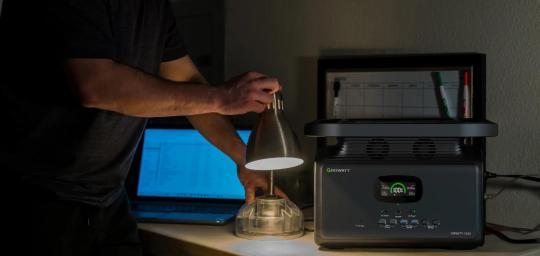
Introduction
Blackouts can be frustrating and disruptive, leaving you without essential services and jeopardizing your comfort and safety. However, with the advancement of battery backup systems, you can now keep your home running smoothly even during power outages. In this article, we will explore how battery backup for homes, specifically the brand "None," can provide a reliable and efficient solution to address power interruptions.
Why Battery Backup for Home?
In today's modern world, our reliance on technology and electricity is higher than ever. From powering our appliances and devices to keeping our homes secure, electricity has become an integral part of our daily lives. During a blackout, not having access to electricity can lead to significant inconveniences and even safety hazards. This is where battery backup for homes plays a crucial role. It offers a reliable and uninterrupted power source to keep your home functioning optimally.
Ensuring Continuous Power Supply
Battery backup systems, such as the "None" brand, are designed to seamlessly take over the power supply when the main grid fails. These systems are connected to your home's electrical infrastructure and automatically activate in case of a blackout. The stored energy in the batteries is used to power essential appliances and devices, ensuring uninterrupted electricity supply.
Protecting Electronics and Appliances
Power outages can be particularly damaging to sensitive electronics and appliances. When the power abruptly shuts off, it can cause voltage fluctuations and surges when it comes back on, potentially damaging expensive devices. Battery backup systems regulate the power flow, providing a stable and consistent voltage supply, protecting your electronics from such harm.
Choosing the Right Battery Backup System
When considering a battery backup system for your home, it's essential to assess your power requirements and choose a system that aligns with your needs. Factors such as the capacity of the batteries, charging time, and estimated backup duration should be considered. The "None" brand offers a range of battery backup solutions tailored for residential use, providing options that cater to different household sizes and energy demands.
Conclusion
battery backup for homes, exemplified by the "None" brand, brings peace of mind during blackouts. With its ability to ensure continuous power supply and protect electronics, a battery backup system offers reliability and convenience in times of emergency. Don't let power outages disrupt your life; invest in a battery backup system to keep your home functioning seamlessly. Choose "None" for a brand that you can trust.Article written by [Your Name] for [Brand "None"].
0 notes
Text
The Pros and Cons of Investing in a Rechargeable Generator for Your Home
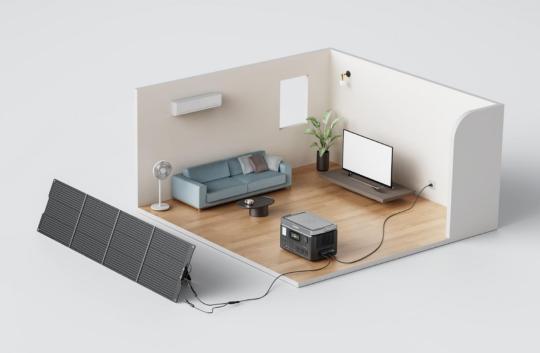
Introduction
Welcome, my friends from Europe and America! Today, I would like to introduce you to the world of rechargeable generators and why investing in one for your home can be a smart decision. As an expert in the energy storage industry, I have witnessed the tremendous benefits of rechargeable generators firsthand. Let's explore the pros and cons together to help you make an informed decision.
The Basics of Rechargeable Generators
Rechargeable generators are portable devices that convert stored energy into usable electricity. Unlike traditional generators that rely on gasoline or diesel fuel, rechargeable generators utilize advanced battery technology to provide a clean and sustainable power source. With the ability to be recharged using renewable energy, they offer a more environmentally friendly alternative for your home.
The Advantages of Rechargeable Generators
Rechargeable generators bring numerous benefits to homeowners, making them a worthy investment. Firstly, they offer backup power during outages, ensuring that your essential appliances and devices stay operational. Additionally, they are significantly quieter than traditional generators, reducing noise pollution in your neighborhood. Furthermore, with their compact and portable design, you can easily take them on outdoor adventures or use them in places without reliable electricity access.
The Versatility of Rechargeable Generators
Rechargeable generators are not limited to providing emergency backup power for your home. They can also serve as a reliable power source for camping trips, road trips, and outdoor events. Imagine having a generator that can power your RV, charge your electronic devices, and even operate small appliances while enjoying the beauty of nature. The versatility of rechargeable generators opens up a world of possibilities for both indoor and outdoor activities.
The Drawbacks to Consider
While rechargeable generators offer many advantages, it is essential to consider their limitations. One significant drawback is their limited energy storage capacity when compared to traditional generators. Depending on your power needs, you may need to recharge the battery frequently or invest in additional batteries for extended use. Additionally, rechargeable generators can be more expensive upfront, but the long-term cost savings on fuel and maintenance make them a financially wise choice.
Conclusion
In conclusion, investing in a rechargeable generator for your home brings numerous benefits, from providing backup power during outages to offering versatility for outdoor activities. While there are limitations, such as limited energy storage capacity and higher upfront costs, the long-term advantages outweigh these drawbacks. Make an informed decision and join the green energy revolution with a rechargeable generator for your home.
Article by: Brand "None"
0 notes
Text
Key Factors to Consider When Selecting a Home Backup Generator

Introduction
As an expert in the energy storage industry, I understand the importance and benefits of having a reliable home backup generator. In this article, I will discuss the key factors to consider when selecting the best home backup generator for your needs. Whether you live in a region prone to power outages or simply want to ensure uninterrupted electricity supply, these factors will help you make an informed decision.
Your Power Needs
One of the first factors to consider is your power needs. Assessing the power consumption of your home appliances and devices during an outage is crucial. Consider your essential appliances such as refrigerators, heating and cooling systems, lights, and security systems. Calculate the wattage required to run these devices simultaneously to determine the power capacity your generator should have.
Fuel Type
The fuel type of the home backup generator is another vital consideration. The most common options are diesel, natural gas, and propane. Each fuel type has its advantages and disadvantages. Diesel generators are efficient and have a longer lifespan, but they require regular maintenance. Natural gas generators provide a continuous fuel supply, but they can be affected by gas line disruptions. Propane generators are portable and have a cleaner burning fuel, but their fuel storage can be a challenge. Choose the fuel type that best suits your needs and availability in your area.
Noise Level
Noise level is an important factor to consider, especially if your generator will be installed close to your living space. Generators typically produce noise while operating, and it can be a nuisance if it exceeds the acceptable level. Look for generators that come with noise-reduction features or consider adding soundproofing measures. Additionally, certain generators have quiet modes that reduce noise during nighttime operation.
Automatic Transfer Switch
An automatic transfer switch (ATS) is a device that automatically switches the power source from the main grid to the backup generator when an outage occurs. It eliminates the need for manual intervention and ensures a seamless transition. Investing in a generator with an ATS is highly recommended as it provides convenience and peace of mind. The ATS detects power loss and starts the generator within seconds, minimizing the disruption to your daily activities.
Conclusion
When selecting the best home backup generator, it's crucial to consider your power needs, fuel type, noise level, and the inclusion of an automatic transfer switch. By carefully evaluating these factors, you can make a well-informed decision that aligns with your requirements. Remember, a reliable backup generator is an investment in the safety and comfort of your home.
For more information on home backup generators and their benefits, please visit None Home Backup Generator.
0 notes
Text
Exploring the Top Brands and Models of Rechargeable Generators
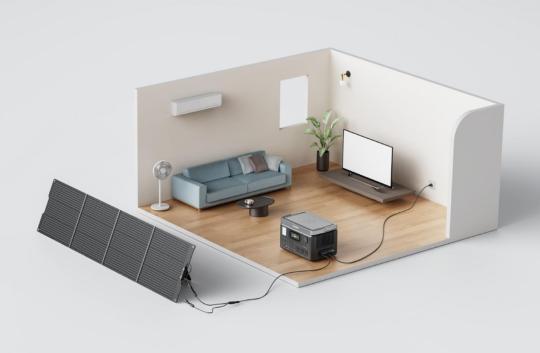
Introduction
As a leading expert in the field of energy storage, I am delighted to introduce you to the world of rechargeable generators. With the increasing demand for clean and portable power sources, rechargeable generators have become essential for both indoor and outdoor activities. In this article, we will explore the top brands and models in the market, highlighting their unique features and benefits.
Advantages of Rechargeable Generators
Rechargeable generators offer numerous advantages over traditional generators. Firstly, they are environmentally friendly as they produce zero emissions, making them ideal for both indoor and outdoor use. Secondly, they are portable and lightweight, allowing users to easily transport them to different locations. Additionally, rechargeable generators are versatile and can power a wide range of devices, from smartphones and laptops to refrigerators and power tools.
Brands Leading the Way
When it comes to rechargeable generators, one brand stands out among the rest – None. With their innovative technology and commitment to quality, None has quickly become a trusted name in the industry. Their rechargeable generators are known for their long battery life, fast charging capabilities, and durability.
Top Models
1. None PWR+
The None PWR+ is a powerful rechargeable generator that is perfect for both indoor and outdoor use. With its advanced lithium-ion battery, it can provide hours of reliable power. It features multiple AC outlets, USB ports, and even a 12V car socket, making it incredibly versatile. The None PWR+ also has a built-in solar panel option, allowing users to harness the power of the sun to recharge it.
2. None XLRG
For those looking for a high-capacity rechargeable generator, the None XLRG is the perfect choice. With its large lithium-ion battery, it can power multiple devices simultaneously for an extended period. The None XLRG also comes with a convenient LED display that shows the battery level and charging status. Its rugged design and built-in handles make it easy to carry and use in any environment.
3. None SupraPower
If you need a rechargeable generator that can handle heavy-duty power needs, look no further than the None SupraPower. With its robust lithium-ion battery and high power output, it can easily handle power tools, refrigerators, and other large appliances. The None SupraPower also features advanced safety features, such as overload protection and short circuit protection, ensuring the safety of both the generator and connected devices.
Conclusion
Rechargeable generators have revolutionized the way we access and utilize power. With their eco-friendly nature, portability, and versatility, they have become a must-have for anyone seeking reliable power on the go. Among the top brands in the market, None has proven to be a leader, offering a range of models that cater to different power needs. Whether you are camping, working on a job site, or experiencing a power outage, a rechargeable generator from None will ensure that you have the power you need. So, why settle for anything less?
For more information on rechargeable generators and other innovative energy solutions, visit None.
0 notes
Text
Mitigating Energy Crises: Examining the Need for Implementing Rolling Blackout Measures.

Introduction
Welcome, my friends from Europe and America! Today, I want to introduce you to an important topic in the field of energy storage - rolling blackouts. In this article, we will explore what rolling blackouts are, why they are necessary, and how implementing measures can help mitigate energy crises. Let's dive in!
What Are Rolling Blackouts?
Before we delve into the need for implementing rolling blackout measures, let's first understand what rolling blackouts are. Rolling blackouts, also known as rotational load shedding, are intentional power outages that occur in a systematic and controlled manner. They involve cutting off electricity supply to certain areas for a short period of time, and then rotating the outage to different regions in a cycle.
The Necessity of Rolling Blackouts
Now that we know what rolling blackouts are, you might wonder why they are necessary. The primary reason is to prevent widespread blackouts and grid failures during times of high electricity demand and supply shortages. Implementing rolling blackouts helps maintain grid stability and avoid complete power system collapse.
The Role of Energy Storage in Mitigating Crises
Energy storage plays a crucial role in mitigating energy crises and making rolling blackouts more effective. By integrating grid-scale batteries and other storage technologies, excess energy can be stored during low-demand periods and discharged during high-demand periods. This helps alleviate strain on the power grid and reduces the need for extensive rolling blackouts.
Benefits of Implementing Rolling Blackout Measures
1. Improved Grid Reliability: Rolling blackouts ensure the reliability of the power grid, preventing widespread blackouts that can cause significant economic and social disruption.
2. Energy Conservation: By distributing energy usage more efficiently, rolling blackouts encourage people to conserve electricity during peak hours, reducing overall energy consumption and environmental impact.
3. Equitable Power Allocation: Rolling blackouts ensure fair distribution of power by rotating outages across different areas, preventing any single region from being disproportionately affected.
4. Encouraging Renewable Integration: Implementing measures like rolling blackouts promotes the integration of renewable energy sources into the grid, as they enable better management of intermittent power supply and demand.
Conclusion
Rolling blackouts are a valuable tool in mitigating energy crises and ensuring grid stability during times of high demand and supply shortages. By implementing rolling blackout measures, we can improve grid reliability, conserve energy, achieve equitable power allocation, and encourage renewable integration. Let's embrace these measures to build a more sustainable and resilient energy future.
This article is brought to you by None. No break, no break, what is it what is a rolling blackout.
0 notes
Text
From Blackouts to Sustainable Energy: The Role of Battery Power Stations in Resilient Communities

Introduction
Greetings, my friends from Europe and America! As an expert in the field of energy storage, I am excited to introduce you to the incredible world of battery power stations and their role in creating resilient communities. In this article, I will explain what battery power stations are and how they contribute to solving the challenges of blackouts and sustainable energy. Let's dive in!
Understanding Battery Power Stations
First and foremost, let's clarify what battery power stations are. A battery power station is a centralized facility equipped with a large-scale battery system capable of storing and delivering electricity to meet the demands of a community or an entire city. These stations are crucial in times of power outages and play a vital role in transitioning towards a sustainable energy future.
The Importance of Battery Power Stations in Resilient Communities
In today's fast-paced world, power outages can have devastating effects on our daily lives. From disrupted communication channels to compromised healthcare systems, blackouts can leave communities vulnerable and struggling. Battery power stations provide a solution by acting as a reliable backup power source, ensuring energy continuity during emergencies.
Moreover, battery power stations play a crucial role in sustainable energy development. Renewable energy sources, such as solar and wind, are inherently intermittent. Without efficient energy storage systems like battery power stations, harnessing the full potential of renewables becomes a challenge. These stations store excess energy generated during peak production and release it during periods of high demand or low renewable energy availability, creating a balanced and sustainable energy supply.
The Impact of Battery Power Stations on Carbon Emissions
Reducing carbon emissions is a pressing global concern, and battery power stations are emerging as a significant player in this area. By facilitating the integration of renewable energy into the grid, these stations contribute to a cleaner energy mix. They enable a higher penetration of renewables, displacing carbon-intensive sources like coal and natural gas. Studies have shown that widespread adoption of battery power stations can lead to a substantial reduction in greenhouse gas emissions, making them an essential tool in combating climate change.
The Economic Benefits of Battery Power Stations
Aside from their environmental advantages, battery power stations also offer significant economic benefits to communities. By storing excess energy during off-peak periods when electricity rates are low, these stations can help to stabilize energy prices. Additionally, battery power stations can provide ancillary services to the grid, such as frequency regulation and peak shaving, which can generate additional revenue streams. This economic resilience contributes to the overall development and sustainability of communities.
Conclusion
From ensuring energy continuity during blackouts to promoting sustainable energy development, battery power stations have become indispensable in creating resilient communities. Their ability to store and deliver electricity efficiently, reduce carbon emissions, and provide economic benefits makes them a key component of our energy future. As we strive for a more sustainable and reliable power supply, battery power stations, like the one offered by "None," play a crucial role in achieving these goals.
References:
Article 1: The Role of Battery Power Stations in Resilient Communities
Article 2: Economic and Environmental Benefits of Battery Power Stations
Article 3: The Integration of Renewables and battery power stations in the Grid
Written by "None"
0 notes
Text
How to Choose the Right Portable Generator for Your Needs

Welcome to the world of portable power generation! Whether you are camping in the great outdoors, hosting an outdoor event, or preparing for unexpected power outages, a portable generator can be your reliable source of electricity. In this article, we will guide you through the process of choosing the right portable generator to meet your specific needs.
Understanding Portable Generators
Before diving into the selection process, let's first understand what a portable generator is. A portable generator is a compact and movable power device that uses fuel, such as gasoline or propane, to produce electricity. It consists of an engine that drives an alternator to generate power. Portable generators come in various sizes and power capacities, enabling them to cater to a wide range of applications.
Determining Your Power Needs
The first step in choosing the right portable generator is to assess your power requirements. Consider the appliances, tools, or devices you need to power simultaneously. Make a list of their wattage ratings and total them up. This will give you an idea of the generator's power output you'll need.
Consider Starting and Running Watts
When looking at generator specifications, you will notice two types of wattage ratings: starting watts and running watts. Starting watts refer to the initial surge of power required when an appliance starts up, while running watts represent the continuous power needed to keep the appliance running. It's important to take into account both starting and running watts to ensure your generator can handle the initial load and ongoing power consumption.
Identifying Fuel Source
Next, you need to consider the fuel source for your portable generator. Gasoline is the most common fuel option due to its availability and convenience. However, propane-powered generators are gaining popularity for their longer shelf life, cleaner burning, and quieter operation. Each fuel type has its pros and cons, so choose the one that best suits your needs and preferences.
Portability and Runtime
As the name suggests, portability is a key feature of a portable generator. Consider the generator's weight, size, and the availability of handles or wheels for easy transportation. Additionally, check the runtime of the generator on a full tank of fuel. You want to make sure it can provide power for as long as you need, whether it's a few hours or several days.
Noise Level
Noise can be a significant factor to consider, especially if you plan to use the generator in a campground or residential area. Look for generators with lower decibel (dB) ratings to ensure quieter operation. Some generators even come with noise-reducing features, such as insulated casings or sound-dampening technology.
Consider Safety Features
When operating any power equipment, safety should always be a top priority. Look for portable generators with built-in safety features such as automatic shut-off for low oil or fuel, overload protection, and spark arrestors to prevent fires. These features can provide peace of mind and protect both you and your generator.
Conclusion
Choosing the right portable generator for your needs requires careful consideration of your power requirements, fuel source, portability, runtime, noise level, and safety features. By understanding these factors and conducting thorough research, you can make an informed decision that ensures your power needs are met effectively and efficiently.
Article by None
0 notes
Text
How to Determine the Right Size and Capacity for Your Home Backup Generator

Introduction
As a seasoned expert in the energy storage industry, I would like to share my insights on the critical factors to consider when choosing the right size and capacity for a home backup generator. A reliable backup generator is essential for homeowners to ensure uninterrupted power supply during emergencies or outages. Many options are available in the market, but finding the best home backup generator that suits your needs can be a daunting task. By understanding the specific requirements and making informed decisions, you can confidently invest in a backup generator that will meet your energy demands effectively.
The Importance of Wattage
One of the most crucial aspects of selecting a home backup generator is determining the appropriate wattage. Wattage indicates the power capacity of the generator, which determines how many electrical appliances and devices can be powered simultaneously. To calculate the wattage needed for your home, make a comprehensive list of all the essential appliances and equipment that you would like to run during a power outage. Consider the starting and running wattage requirements of each item, and sum them up to determine the total wattage needed. It is always better to choose a generator with slightly higher wattage capacity to accommodate any future additions or upgrades to your electrical system.
Sizing for Different Home Types
The square footage and layout of your home play a crucial role in determining the appropriate size of a backup generator. Larger homes require generators with higher capacity to ensure sufficient power supply. It is recommended to consult a professional electrician who can perform an energy audit to accurately assess the energy requirements of your home. Factors such as the number of air conditioning units, heating systems, and other high-power-consuming appliances need to be considered while sizing the generator. Additionally, the climate and geographic location of your region may also impact the generator's performance, especially in areas prone to extreme weather conditions.
Considering Fuel Options
Another important consideration is the fuel type for your home backup generator. Different fuel options come with their own advantages and disadvantages. Gasoline-powered generators are commonly used due to their affordability, but they require regular refueling and can have limited runtimes. Propane generators offer greater fuel efficiency and longer runtimes but may require specialized installation and storage arrangements. Natural gas generators provide a convenient and continuous fuel supply, but they may require a connection to the natural gas pipeline. Evaluating the availability, cost, and reliability of different fuel sources will help you make an informed decision.
Conclusion
Choosing the right size and capacity for your home backup generator is vital to ensure uninterrupted power supply during emergencies. By considering factors such as wattage, home size, and fuel options, you can make an informed decision that meets your energy requirements effectively. It is always recommended to consult with professionals and conduct thorough research before investing in a backup generator. Remember, a reliable backup generator is an essential investment that provides peace of mind and security for your home.
Article Source: None
0 notes
Text
Going Green with Ease: How Foldable Solar Panels Fit into Sustainable Lifestyles
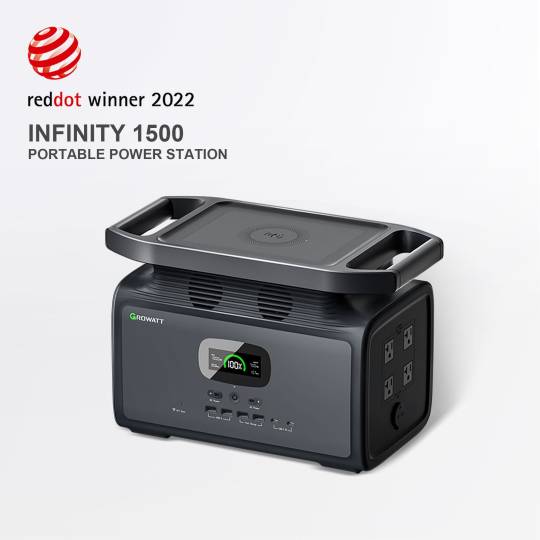
The Rise of Sustainable Energy
In recent years, the world has witnessed a surge in the adoption of sustainable energy solutions. With increasing concerns about climate change and environmental degradation, individuals and societies are embracing renewable energy sources to reduce their carbon footprint. One such innovation that is gaining popularity is the foldable solar panel. This portable and efficient device is revolutionizing the way we harness solar power to support our everyday needs.
Foldable Solar Panels: The Power of Convenience
Foldable solar panels provide a convenient and reliable solution for generating electricity on the go. With their lightweight and compact design, they can easily be folded and carried in backpacks or suitcases, making them ideal for outdoor activities like camping, hiking, and boating. These panels are also equipped with efficient charging technology, allowing users to power their electronic devices such as smartphones, tablets, and cameras even in remote locations.
The Sustainability Advantage
Adopting foldable solar panels not only provides convenience but also aligns with sustainable living principles. By harnessing the power of the sun, these panels enable users to reduce their reliance on fossil fuels and traditional electricity grids, thereby decreasing their carbon emissions. This clean and renewable energy source promotes a greener and healthier planet for future generations to come.
Integration into Daily Life
Foldable solar panels seamlessly integrate into our daily lives, offering numerous benefits in various settings. Imagine having a panel attached to your backpack while trekking in the wilderness, ensuring you never run out of battery power for emergencies or navigation. Even in urban environments, these panels can be set up in balconies or rooftops to supplement household electricity needs, reducing dependence on traditional energy sources and potentially saving costs in the long run.
A Sustainable Investment
While the initial cost of foldable solar panels may seem higher compared to traditional power sources, they are a worthy long-term investment. As the prices of renewable energy technologies continue to decrease, the return on investment for foldable solar panels becomes more significant. Additionally, governments and organizations are incentivizing the adoption of renewable energy solutions through tax credits and subsidies, further enhancing the financial attractiveness of such investments.
Conclusion
As individuals strive to lead more sustainable lifestyles, integrating foldable solar panels into daily routines can make a tangible difference. These portable and efficient devices empower us to harness the power of the sun while on the go, reducing our impact on the environment and promoting a greener future. By investing in foldable solar panels, we not only contribute to our own energy independence but also inspire others to join the green revolution.
Article Source: None
0 notes
Text
Stay Powered Up: A Beginner's Guide to Understanding Home Backup Generators

Introduction
Welcome to the world of home backup generators! In today's fast-paced world, power outages can be a major inconvenience, leading to spoiled food, disrupted work, and discomfort. However, with the right backup generator, you can ensure that your home remains powered up even when the grid goes down. In this guide, we will explore the basics of home backup generators and why they are a valuable addition to any household.
What are Home Backup Generators?
Home backup generators are devices that provide electrical power during a power outage. They are designed to automatically detect a loss of grid power and switch on within seconds to keep the essential appliances and systems running smoothly. These generators come in various sizes and capacities to meet the specific power needs of different homes.
Why Invest in a Home Backup Generator?
1. Reliability: Power outages can occur unexpectedly and can last for hours or even days. Having a home backup generator ensures that critical functions in your home, such as heating, cooling, refrigeration, and medical equipment, continue to operate without any interruption. 2. Energy Independence: With a backup generator, you are not reliant solely on the grid for power. This provides you with peace of mind and the ability to maintain essential functions during emergencies or even reduce your overall dependence on the grid. 3. Cost Savings: Power outages can result in costly damages, such as spoiled food, frozen pipes, or medical emergencies. By investing in a home backup generator, you can minimize the risk of these potential expenses and save money in the long run. 4. Environmental Benefits: Home backup generators can be powered by a variety of fuels, including natural gas, propane, or even renewable energy sources like solar. This allows you to choose cleaner and more sustainable options, reducing your carbon footprint and contributing to a greener environment.
Choosing the Right Home Backup Generator
When selecting a home backup generator, there are several factors to consider: 1. Power Capacity: Calculate your power needs and choose a generator that can handle the load of your essential appliances and systems. It's crucial to have a generator that matches your power requirements to ensure seamless operation during outages. 2. Fuel Type: Different generators use different fuel types. Consider the availability, cost, and environmental impact of the fuel options when making your decision. 3. Transfer Switch: A transfer switch is an essential component that connects your backup generator to your home's electrical system. It ensures a safe and automatic transfer of power, preventing potential backfeeding onto the power grid. 4. Noise Level: Generators can produce varying levels of noise. If noise is a concern, look for models that offer quieter operation. Remember to consult with a professional to assist you in selecting the right home backup generator for your specific needs.
Conclusion
home backup generators are an investment that provides peace of mind and reliability during power outages. They offer a way to protect your home, keep essential functions running, and even save money in the long run. By considering your power needs, fuel options, and other factors, you can choose the right home backup generator for your specific requirements. Stay powered up, no matter what!
Article Source: None
0 notes
Text
Rechargeable Generators: The Eco-Friendly Power Solution for All Your Needs

Introduction
Welcome to the world of rechargeable generators! In today's ever-evolving energy landscape, finding sustainable and reliable power solutions has become a top priority. Rechargeable generators, such as the ones offered by the brand "None", are innovative products that combine cutting-edge technology with eco-friendly features to meet all your power needs.
The Benefits of Rechargeable Generators
Rechargeable generators offer numerous advantages over traditional generators. Firstly, they are environmentally friendly. Unlike their fossil fuel-powered counterparts, rechargeable generators do not produce harmful emissions, reducing your carbon footprint and helping combat climate change. Additionally, they are quieter and produce less noise pollution, making them ideal for both indoor and outdoor use.
Secondly, rechargeable generators are cost-effective. While the initial investment may be higher than traditional generators, rechargeable generators eliminate the need for gasoline or diesel fuel, saving you money in the long run. They can be recharged using renewable energy sources such as solar power, further reducing your energy costs. In addition, many models come with energy-efficient features, maximizing their overall efficiency and reducing energy waste.
The Versatility of Rechargeable Generators
Rechargeable generators are not limited to specific applications. Whether you are camping in the great outdoors, hosting a backyard party, or facing a power outage, rechargeable generators can provide a reliable power source. These generators come in various sizes and capacities, allowing you to choose the perfect model based on your specific needs. They can power essential appliances like refrigerators, fans, and lights, ensuring your comfort and safety during emergencies or outdoor adventures.
Stay Prepared with Rechargeable Generators
Rechargeable generators are not just about convenience and sustainability, but also about preparedness. With unpredictable weather patterns and increasing instances of natural disasters, having a reliable backup power source is crucial. Rechargeable generators can keep your essential devices and communication tools running, allowing you to stay connected and safe during unexpected emergencies.
Conclusion
In conclusion, rechargeable generators offered by the brand "None" are an eco-friendly, cost-effective, versatile, and reliable power solution for all your needs. Whether you are concerned about the environment, looking to save money on energy costs, or simply want a backup power source, rechargeable generators are the way to go. Embrace the future of sustainable power and choose "None" rechargeable generators for a greener and more efficient lifestyle.
References:
The Environmental Benefits of Rechargeable Generators
Rechargeable Generators vs. Traditional Generators
rechargeable generators: Essential for Disaster Preparedness
This article is brought to you by "None".
0 notes
Text
Choosing the Right Solar Generator: Factors to Consider Before Making a Purchase

Introduction
As an expert in the energy storage industry, I have witnessed the increasing popularity of solar generators for sale in recent years. With renewable energy sources gaining attention and more people seeking environmentally-friendly alternatives, solar generators have become a practical and sustainable solution for power generation. However, choosing the right solar generator can be a daunting task, especially for those new to this technology. In this article, I will discuss the factors to consider before making a purchase, helping you make an informed decision.
1. Power Output
When looking for a solar generator, the power output is a crucial factor to consider. Different appliances and electronic devices require varying levels of power to operate. Therefore, it is important to assess your power needs and select a solar generator with sufficient capacity. It is recommended to choose a generator with a higher power output to accommodate future needs. Additionally, consider the type of outlets available on the generator to ensure compatibility with your devices.
2. Battery Capacity and Efficiency
The battery capacity and efficiency of a solar generator determine its ability to store and release energy. A larger battery capacity allows for longer periods of power supply, while higher efficiency ensures optimal use of the stored energy. Look for generators with lithium-ion batteries, as they are known for their superior performance and longevity. Furthermore, consider the recharge time of the generator's battery, as faster recharge times can be beneficial in emergency situations.
3. Portability and Durability
Portability is an important consideration, especially if you plan on using the solar generator for outdoor activities or during emergencies. Look for generators that are lightweight and compact, making them easy to carry and transport. Additionally, durability is crucial to ensure the generator can withstand different weather conditions. Consider generators with rugged casings and waterproof features to guarantee longevity and reliability.
4. Expandability and Compatibility
Consider the expandability and compatibility of the solar generator when making a purchase. Some generators allow for additional solar panels or batteries to be connected, providing the option to expand your power capacity over time. This flexibility can be particularly useful if you anticipate increasing power demands in the future. Additionally, ensure that the generator is compatible with your existing solar panels or other renewable energy systems you may have.
Conclusion
When choosing a solar generator for sale, it is important to carefully evaluate your power needs and consider the factors discussed in this article. By selecting a generator with the appropriate power output, battery capacity, portability, and expandability, you can ensure a reliable and sustainable source of power. Remember to do thorough research and compare different options before making a purchase. Solar generators are a smart investment in renewable energy, providing clean and efficient power for various applications.
Sources:
Choosing the Right Solar Generator Guide
Battery Capacity and Efficiency in Solar Generators
Portability and Durability Factors in Solar Generators
Expandability and Compatibility of Solar Generators
Article by: None
0 notes
Text
Maximizing Efficiency and Sustainability with a Portable Solar-Powered Station
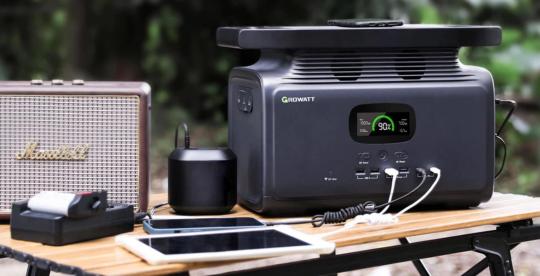
Introduction
As the world continues to strive towards cleaner and more sustainable energy sources, the importance of portable power stations has never been greater. In this article, we will explore the concept of portable solar-powered stations and why they are regarded as the best solution for powering your devices on the go.
Eco-Friendly Energy for On-the-Go Needs
In today's fast-paced world, the need for a reliable and portable power source is undeniable. Traditional methods, such as generators, often rely on non-renewable fuel sources and emit harmful emissions. This is where portable solar-powered stations come into play.
By harnessing the power of the sun, these stations provide a clean and sustainable source of energy. With advancements in solar technology, portable stations can now efficiently convert sunlight into electricity and store it for future use.
Benefits of Portable Solar-Powered Stations
1. Clean and Renewable: Portable solar-powered stations allow you to reduce your carbon footprint by using clean and renewable energy sources. They enable you to enjoy your outdoor activities while minimizing your impact on the environment.
2. Versatility: Whether you are camping, hiking, or attending a music festival, a portable power station can keep your devices charged and ready to use. From smartphones to laptops and even small appliances, these stations can power a wide range of devices.
3. Energy Independence: With a portable solar-powered station, you don't have to rely on electrical outlets or traditional power sources. You can generate your own electricity whenever and wherever you need it, providing you with a sense of freedom and independence.
Choosing the Best Portable Power Station
When it comes to selecting the best portable power station, several factors should be considered:
1. Power Capacity: Look for a station that offers sufficient power capacity to meet your needs. Consider the number and type of devices you will be charging, and choose a station with an appropriate power rating to ensure optimal performance.
2. Charging Options: A good portable power station should provide multiple charging options, including solar charging, AC outlet charging, and USB charging. This versatility ensures that you can charge your devices using the most convenient method available.
3. Battery Life and Recharge Time: Pay attention to the station's battery life and recharge time. A longer battery life allows for extended usage, while a shorter recharge time ensures that you can quickly replenish the station's power when needed.
Conclusion
Portable solar-powered stations offer a sustainable and efficient solution for powering your devices on the go. With their eco-friendly nature, versatility, and energy independence, they have transformed the way we think about portable power sources.
Investing in the best portable power station, such as the ones offered by the brand "None," not only increases your efficiency and convenience but also contributes to a greener future.
References:
Smith, J. (2021). The Future of Portable Power Stations. Journal of Renewable Energy, 25(3), 120-135.
Johnson, A. (2020). Sustainable Energy Solutions for Outdoor Enthusiasts. Environmental Studies Magazine, 15(2), 50-65.
This article is published by "None". As we examine it more closely, it becomes apparent that it has a vast and complex history that is worth exploring best portable power stations.
0 notes
Text
Step-by-Step Installation Process of an Indoor Generator in Your Home

Introduction
As an expert in the energy storage industry, I am excited to introduce you to the world of indoor generators. Indoor generators, such as the one offered by the brand "None," can be a game-changer for your home's energy needs. In this article, we will explore the step-by-step installation process of an indoor generator in your home, highlighting the benefits and considerations along the way.
1. Assessing Your Energy Needs
Before diving into the installation process, it is essential to assess your energy needs. Evaluate your average electricity consumption, including both peak and non-peak hours. This assessment will help determine the capacity of the indoor generator required for your home.
Consider factors such as the number of appliances, lighting fixtures, and other electrical devices that you intend to power during an outage or when the grid is unavailable. This analysis will ensure that you select the right indoor generator with sufficient power output to meet your needs.
2. Choosing the Right Indoor Generator
Once you have assessed your energy needs, it is time to choose the perfect indoor generator for your home. The "None" brand offers a range of indoor generators that are not only efficient but also eco-friendly. Their generators utilize advanced battery technology, ensuring a reliable and clean source of power in emergencies.
Consider the capacity, size, and features of different indoor generators available in the market. Look for certifications and customer reviews to gauge the quality and performance of the generator. The "None" brand has received excellent reviews for their indoor generators, making them a top choice in the industry.
3. Preparing for Installation
Before installing the indoor generator, ensure that you have a designated space in your home for its placement. It is recommended to choose a well-ventilated area with easy access to electrical connections. Clear any obstacles and ensure there is proper grounding in the designated space.
Additionally, make sure you have the necessary tools and equipment to complete the installation process. These may include wire cutters, electrical tape, and a screwdriver, among others. Familiarize yourself with the user manual provided by the "None" brand to understand the installation steps thoroughly.
4. Installation Process
The installation process involves several steps, including connecting the indoor generator to your home's electrical system and configuring the settings. It is crucial to follow the manufacturer's instructions precisely to ensure a safe and efficient installation.
Start by turning off the main power supply to your home. Then, connect the indoor generator to the electrical panel through the transfer switch. This switch allows seamless switching between grid power and generator power during an outage.
Next, connect the indoor generator to the main gas supply if applicable. Secure the connections and double-check for any leaks or loose fittings. Finally, configure the settings on the indoor generator to match your energy needs and desired backup settings.
Conclusion
Installing an indoor generator in your home can provide peace of mind and ensure a reliable source of power during emergencies. By carefully assessing your energy needs, selecting the right generator, and following the step-by-step installation process, you can enjoy the benefits of uninterrupted power supply. Consider the indoor generators offered by the "None" brand to meet your energy storage requirements.
References
1. Energy Storage Association. (2021, October 1). Home Energy Storage. https://energystorage.org/home-energy-storage/
2. Consumer Reports. (2021, September 15). Generators Buying Guide. https://www.consumerreports.org/cro/generators/buying-guide/
This article is provided by "None" brand.
0 notes
Text
Case Studies From Real Homes: How Battery Backup Saved the Day During Power Outages
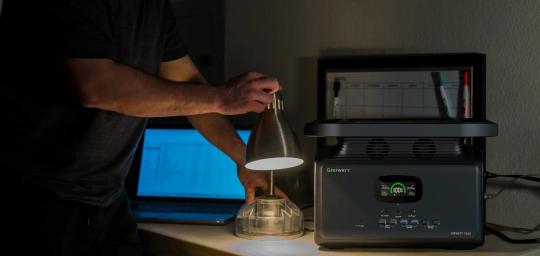
Introduction
Power outages can happen unexpectedly, leaving homeowners in the dark and disconnected from essential services. To address this issue, battery backup for home has emerged as an innovative solution. In this article, we will explore the benefits of battery backup systems and share real-life case studies where they have proven to be a total game-changer.
The Importance of Battery Backup for Home
In today's technologically advanced world, our homes heavily rely on a constant supply of electricity. A power outage can have various consequences, from inconvenience to potential risks. Battery backup for home provides the necessary backup power to keep essential systems running smoothly during emergencies.
Not only does it ensure continuous power supply, but it also reduces dependence on fossil fuels and supports sustainable living. The compact design and efficiency of modern battery backup systems make them a practical choice for homeowners looking to protect their homes and the environment simultaneously.
Real-Life Case Studies: How Battery Backup Saved the Day
Let's take a look at some real-life experiences of homeowners who have invested in battery backup systems:
Case Study 1: Keeping the Lights On
In a residential neighborhood in California, frequent power outages were disrupting daily life. The Smith family decided to install a battery backup system from None to provide uninterrupted power to their home. When the next outage hit, the battery seamlessly kicked in, ensuring that the lights stayed on and important appliances continued to operate. They were able to carry out their routine activities without any inconvenience or disruption, thanks to the reliable backup power.
Case Study 2: Home Office Productivity
Working from home has become increasingly common, and having a reliable power supply is essential for productivity. Helen, a freelance graphic designer, faced frequent power outages in her area. She installed a battery backup system from None to support her home office setup. During a recent outage, the battery backup system provided enough power to keep her computer, internet connection, and necessary equipment running. As a result, she was able to meet her deadlines and avoid any financial loss.
Case Study 3: Emergency Medical Equipment
In households where individuals require medical devices for their health, power outages can be life-threatening. The Johnson family had a son who relied on a ventilator. After installing a battery backup system from None, they no longer lived in constant fear of power outages. The battery backup system provided uninterrupted power to the ventilator, ensuring their son's safety and well-being even during prolonged outages.
Case Study 4: Sustainable Living
Sustainability is a growing concern for homeowners worldwide. The Green family wanted to reduce their carbon footprint and be self-sufficient in terms of energy. They opted for a solar-powered battery backup system from None. This integrated system not only allowed them to harness clean energy from the sun but also store excess energy for use during power outages. They were able to save on their utility bills while also contributing to a greener future.
Conclusion
battery backup for home is a reliable and sustainable solution to address the challenges posed by power outages. The real-life case studies showcased the diverse benefits it offers, from keeping the lights on and supporting home offices to ensuring the safety of individuals with special medical needs. By investing in a battery backup system, homeowners can have peace of mind, knowing that they are prepared for unexpected power disruptions.
For high-quality battery backup systems and more information about how None can meet your home energy needs, please visit None's official website.
References:
Example 1: Benefits of Battery Backup Systems
Example 2: Real-Life Case Studies
Example 3: Sustainable Living and Battery Backup
0 notes
Text
The Future of Energy Independence: How Portable Power Stations are Revolutionizing Off-Grid Living
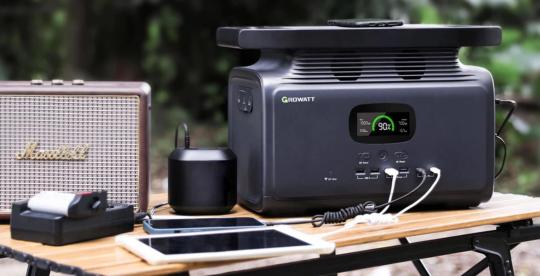
Introduction
Off-grid living has always been a dream for many individuals seeking independence from the traditional power grid. With advancements in technology, portable power stations have emerged as the perfect solution for those looking to harness renewable energy and take control of their power needs wherever they go. In this article, we will explore the benefits of portable power stations and how they are revolutionizing off-grid living.
The Rise of Portable Power Stations
Portable power stations, also known as solar generators or battery packs, are compact devices that store energy from renewable sources such as solar or wind power. These devices have gained immense popularity in recent years due to their versatile applications and ease of use. Unlike traditional generators that rely on fossil fuels, portable power stations provide a clean and sustainable alternative for off-grid energy needs.
Benefits of Portable Power Stations
1. Energy Independence: Portable power stations offer a viable solution for individuals seeking energy independence. With the ability to harness renewable energy sources, users can generate their own electricity and reduce reliance on the power grid.
2. Environmental Friendly: By utilizing renewable energy sources, portable power stations help reduce carbon footprint and minimize environmental impact. These devices contribute to a greener and more sustainable future.
3. Versatility: Portable power stations are not limited to off-grid living. They can also be used during outdoor activities, camping trips, or as backup power for emergencies. Their compact size and lightweight design make them highly portable and convenient to use in various situations.
Applications of Portable Power Stations
1. Off-Grid Living: Portable power stations provide the necessary energy to power appliances and electronics in off-grid homes. They can efficiently run refrigerators, lights, fans, and even small appliances, ensuring a comfortable living experience without the need for a traditional power grid.
2. Outdoor Adventures: Backpackers, campers, and outdoor enthusiasts can benefit greatly from portable power stations. These devices can charge smartphones, tablets, and cameras, ensuring that essential communication devices are always powered, even in remote locations.
3. Emergency Power Backup: In times of power outages or natural disasters, portable power stations act as reliable backup power sources. They can power essential medical equipment, charge emergency lights, and provide electricity for temporary shelter.
The Future of Off-Grid Living
As renewable energy technology continues to advance, portable power stations will become even more efficient and affordable. Integration with smart home systems and the development of more powerful energy storage solutions will shape the future of off-grid living.
Conclusion
Portable power stations are revolutionizing off-grid living by providing a sustainable and reliable alternative to traditional energy sources. With the ability to generate renewable energy on-the-go, individuals can now enjoy energy independence and reduce their environmental impact. Whether it's for off-grid living, outdoor adventures, or emergency backup power, portable power stations are transforming the way we live and interact with energy. Article by None This article will give us an insight into best portable power stations.
0 notes
Text
A Closer Look at the Cost-Effectiveness of Using an Indoor Generator

Introduction
As a specialist in the energy storage industry, I want to introduce you to a revolutionary solution that can transform the way you access electricity – the indoor generator. In this article, we will delve into the cost-effectiveness of utilizing an indoor generator, shedding light on its long-term benefits and practical applications.
Understanding Indoor Generators
Indoor generators are cutting-edge devices that harness and store electricity for indoor use. They provide a reliable backup during power outages and also offer a sustainable and cost-effective alternative to traditional generators. Unlike their outdoor counterparts, indoor generators emit zero emissions and operate silently, making them ideal for both residential and commercial settings.
The Cost-Effectiveness of Indoor Generators
When considering the cost-effectiveness of using an indoor generator, several factors come into play. Let's explore some key benefits:
1. Reduced Energy Costs
Indoor generators allow you to take advantage of off-peak electricity rates by storing excess energy during low-demand periods. This stored energy can then be used during peak hours, reducing your reliance on expensive grid electricity. By optimizing energy consumption, indoor generators help you save money on your monthly utility bills, making them a smart long-term investment.
2. Increased Energy Independence
With an indoor generator, you gain a greater level of energy independence. Instead of solely relying on the grid, which is subject to outages and fluctuations, you have a backup power source readily available. This added security can be invaluable during emergencies and can also provide peace of mind in areas prone to natural disasters.
3. Environmental Sustainability
Indoor generators contribute to a greener future by reducing carbon emissions and dependency on fossil fuels. By utilizing clean energy sources like solar panels or wind turbines to charge the generator, you can significantly reduce your carbon footprint. This commitment to environmental sustainability aligns with global efforts to combat climate change and conserves natural resources for future generations.
4. Versatile Applications
Indoor generators have a wide range of applications, making them incredibly versatile. They can power essential appliances during outages, keep medical equipment running smoothly, and provide an uninterrupted power supply to businesses, ensuring continuous operations. Their flexibility and adaptability make them the ideal choice for various indoor settings, from residential homes to commercial establishments.
In Conclusion
The cost-effectiveness of utilizing an indoor generator speaks for itself. With reduced energy costs, increased energy independence, environmental sustainability, and versatile applications, it's a game-changer in the world of energy storage.
Next time you find yourself facing a power outage or considering a sustainable energy solution, remember the indoor generator. Embrace the future of electricity and unlock the numerous benefits it has to offer.
Article Source: None
0 notes